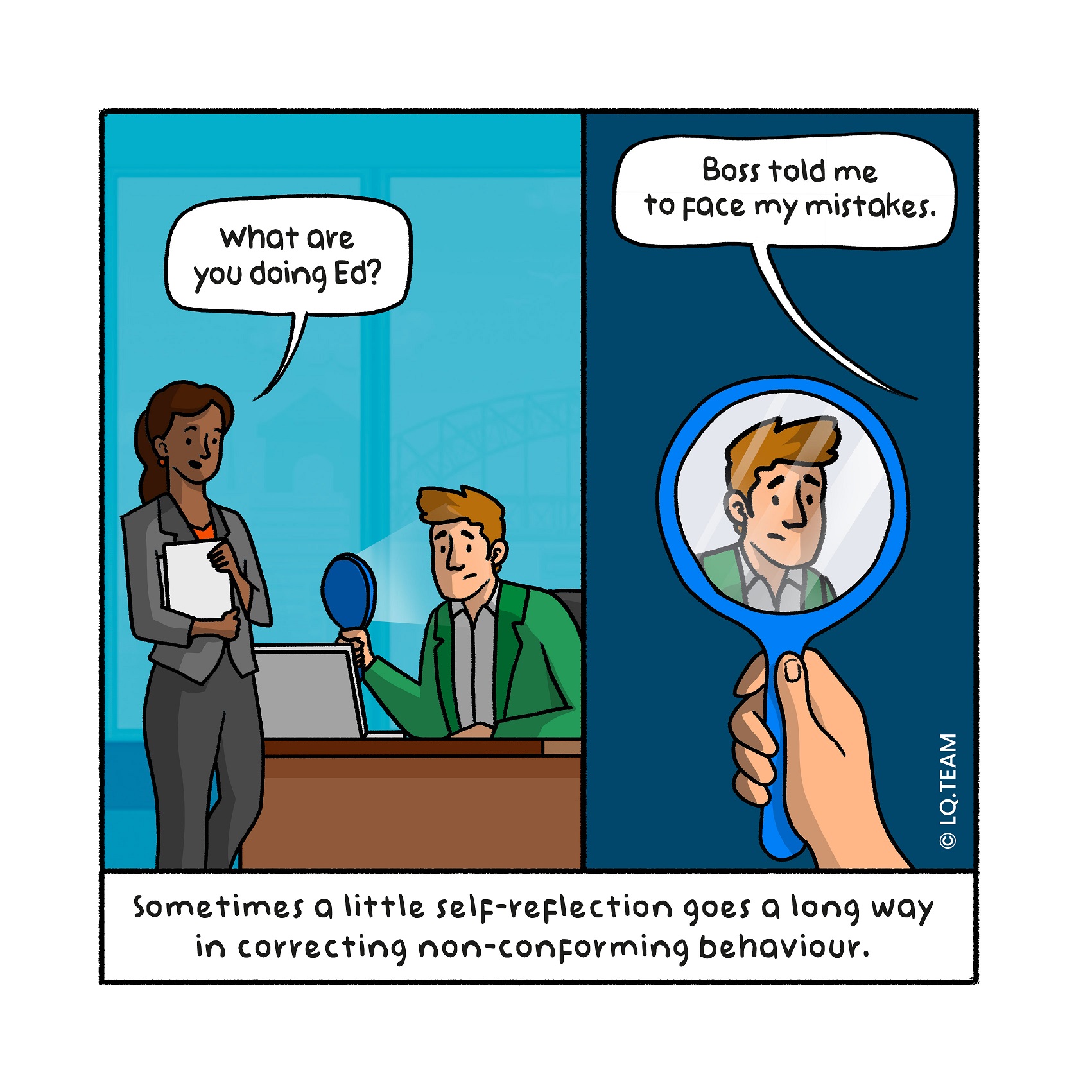
Nut to crack: How do you ensure an employee will conform to the behavioural rules?
In change books you often read about balancing between the carrot and the stick; the tempting perspective versus corrective measures to stimulate certain behavioural change. Consider, for example, how the government influ- ences our behaviour; they grant you a subsidy when you renovate your house sustainably (the carrot) and give you a fine if you drive too fast (the stick). My personal preference is to work with “the carrot” as much as possible. Yet sometimes you will have to deal with the norm-transgressing behaviour of individuals, which require corrective measures. How do you tackle this ef- fectively? And how do you do this if you are not in position to “enforce” this formally?
Nutcracker: Use non-negotiable rules and self-regulating capacity
Especially if you do not have the formal authority, it can be complicated to correct non-normative behaviour. Consider, for example, a higher-ranking manager who violates quality or safety standards several times, even after this has been pointed out. How do you intervene?
My basic assumption is that no one makes these violations intentionally. At the same time I do observe that definitions of what is acceptable, somewhat acceptable and unacceptable can vary a lot from individual to individual. Therefore, the clearer the non-negotiable rules, the better.
In addition, asking an offending individual to reflect on non-confirming be- haviour may help too; what standard has been violated, why did this happen, and what will the person in question do to prevent a similar situation in the future? If this same person is subsequently asked to report the insights from this self-reflection in a forum, the social pressure will be high not to want to repeat it. In other words, it will result in self-regulation. The following example illustrates what this might look like.
Real-life example: Facing up to your mistakes
Quality standards are regularly violated in a metals company. It has led to multiple inci dents, three of which were in the last few months. A quality manager has been appointed to turn the tide, but he has no hierarchical authority to “enforce” compliance. How does he break through the behavioural pattern of his colleagues, often higher in the hierarchy? What he does is the following. He asks the responsible director to invite one of the notorious offenders to the board meeting. This person is asked to use photos and film to explain which incidents have occurred recently, why those happened, which rules of conduct were violated and what he has done to prevent a recurrence.
This is quite a task for the person in question. It requires him to deepdive into the details first, including having conversations with victims. Among other things, he speaks to a man who has permanent damage to his hand as a result of an industrial accident, and to his wife. These conversations made a deep impression on him, because he had not realised the impact on the victim and those close to him. The photos taken to reconstruct the other incidents also shock him when he takes a closer look; you could clearly see the impending disaster, which could have been avoided. He shares his findings with the management and describes the process he has gone through himself: how he started the case analysis casually, how he was shocked and how deeply the experience affected him. The management displays respect and discretion when listening to the case. The effect?
The notorious offender becomes a passionate propagator of safety standards, which has a ripple effect in the rest of the organisation.
Tip for change leader
Transparency helps. Make incidents public, for example in the field of quality or safety, with the help of a short video on the incident, the cause, the rules of conduct that were violated and what measures have been taken to prevent recurrence. This helps raise awareness among a larger group of leaders and employees about what they can do to prevent incidents, whilst at the same time clarifying what the boundaries of good and bad behaviour are.
Tip for change enabler
Do not shy away. If something does not feel right, most of the time it is not right. Make the effort to proactively address what needs to be addressed, even if this feels unpopu lar or is not appreciated in the first instance.
Kernel: Self-correcting capacity leads to behavioural change
Clear rules of conduct, termed non-negotiable rules, make people aware of the norm. Self-reflection in relation to that norm, in combination with confron- tation, often produces self-correction, and thus works effectively to reduce undesirable behaviour.
